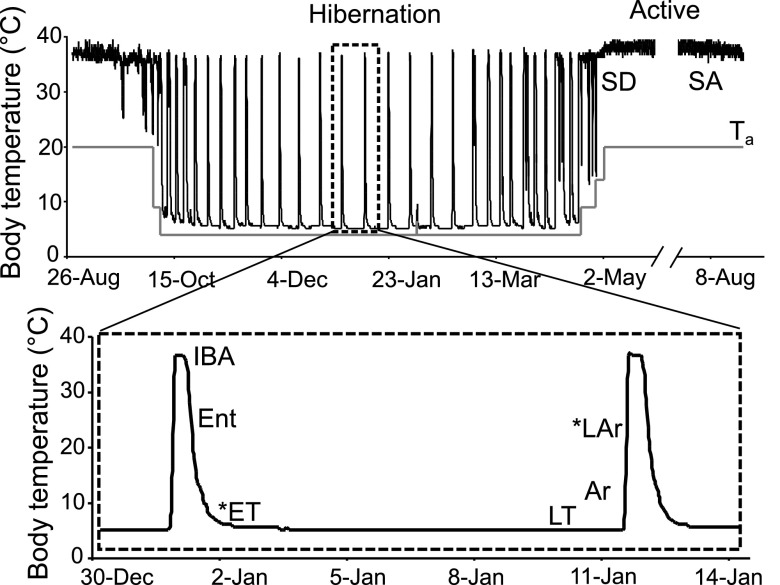Fig. 1.
Body temperature (Tb) changes over time in a laboratory-housed 13-lined ground squirrel. Top: ∼1 yr; black line plots Tb, gray line plots ambient temperature. Hibernation is the heterothermic period. The boxed region of the Tb trace is expanded in the bottom panel. Abbreviations indicate group physiological status at time of kidney collection. For difference gel electrophoresis (DiGE), animals in 6 distinct physiological states were analyzed, including 2 groups from the homeothermic period (May-Sept.), spring dark (SD), March-April, while still housed in hibernaculum (n = 5) with Tb continuously euthermic (35–37°C) for 11–20 days following spontaneous exit from winter heterothermy (note that the animal in this trace did not spontaneously end heterothermy but rather waited until the ambient temperature was increased to switch to homeothermy), and summer active (SA), first week in August, euthermic (n = 6, Tb= 35–37°C). There were also 4 groups from the winter heterothermic period (collected between Dec.-Feb.): interbout aroused (IBA), euthermic 3–4 h after an arousal (n = 5, Tb = 35–37°C); entrance (Ent), entrance into torpor (n = 5), Tb dropping to between 23 and 27°C following an IBA; late torpor (LT), 80–95% of torpor bout length, based on previous bout (n = 6, Tb = 5–7°C); and arousing (Ar), spontaneously arousing from torpor with Tb elevated to 7.0–13°C (n = 6). We included 2 additional groups of winter hibernators, indicated with *, for Western blots and A414 measurements only: early torpor (ET), 10% of torpor bout length (Tb = 5–7°C), based on length of the previous torpor bout; and late arousing (LAr), spontaneously arousing from torpor with Tb elevated to 18–25°C during rewarming.

